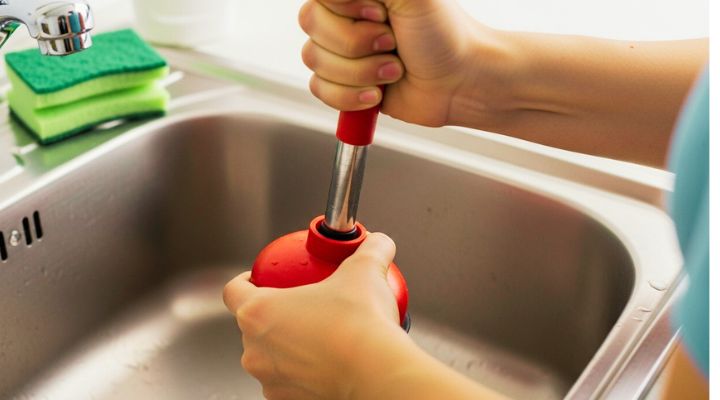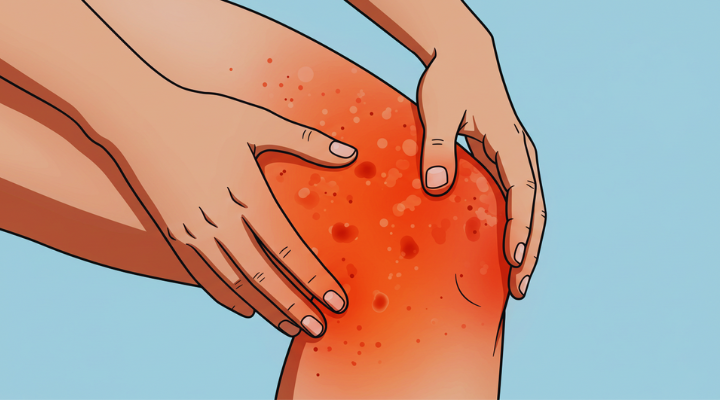A clogged drain can bring your entire household to a standstill. Whether it’s a slow-draining sink, a bathtub full of standing water, or a kitchen drain refusing to empty, blockages always seem to strike at the worst moment. The good news? With a simple but highly effective secret plumber’s trick, you can clear most clogs within seconds, without hiring a professional, without harsh chemicals, and without dismantling any pipes.
Below, we reveal this insider method—along with expert-level insights to keep your drainage system flowing smoothly all year long.
Understanding Why Drains Clog: The Hidden Causes Professionals Know

Clogs are rarely random. They are caused by layers of debris sticking to the inner walls of your pipes until water flow becomes restricted. The most common culprits include:
- Grease and oil buildup in kitchen sinks
- Hair and soap scum in bathroom drains
- Food particles caught in P-traps
- Mineral deposits from hard water
- Foreign objects dropped down the drain accidentally
These blockages typically start small but compound over time. That’s why the quickest fixes and the deepest long-term prevention require understanding what’s happening beneath the surface.
The Secret Plumber’s Trick That Works in Seconds
Professional plumbers often rely on a surprisingly simple method before turning to expensive tools. This technique uses a combination of heat + pressure + vacuum force to dislodge stubborn clogs instantly.
Here’s how it works, step by step:
Step 1: Boil Water — But Not Just Any Amount
Bring one full kettle (or 2–3 liters) of water to a rolling boil.
Boiling water breaks down grease, softens buildup, and prepares the clog for dislodgement.
Step 2: Seal the Drain Tightly
Use a wet microfiber cloth or rubber stopper to seal the drain opening completely.
Sealing is crucial because the next step relies on pressure and vacuum—not just water flow.
Step 3: Pour Boiling Water Slowly
Lift the cloth slightly and pour half the boiling water into the drain. Immediately reseal it.
This traps heat and steam, loosening compressed debris deep inside the pipe.
Step 4: Create a Forced Vacuum
With the drain still sealed, apply downward pressure using either:
- a cup-style plunger, or
- your hand flat over a thick cloth
Push firmly 10–15 times.
This creates powerful suction capable of breaking apart years of buildup in seconds.
Step 5: Pour the Rest of the Boiling Water
Remove the seal and pour the remaining water.
You should hear a sudden whoosh, indicating the blockage has cleared.
Plumbers love this trick because it works fast, is completely safe for pipes, and resolves more than 80% of household clogs without the need for specialized tools.
Why This Plumber’s Trick Works So Effectively
This method succeeds because it attacks clogs using three forces simultaneously:
1. Heat
Boiling water softens grease, soap residue, and compacted debris that cold water cannot break down.
2. Pressure
The sealed drain creates a temporary pressure chamber, forcing hot water into areas that are normally difficult to reach.
3. Vacuum Suction
Every downward push pulls debris upward, breaking apart the clog from multiple angles.
Combined, these forces mimic professional plumbing tools—but in a much simpler and more accessible way.
When to Use This Method (and When Not To)
Perfect for:
- Kitchen drains blocked by grease and food
- Bathroom sinks clogged with hair
- Bathtubs and showers draining slowly
- Reoccurring low-level blockages
Avoid if you have:
- PVC pipes older than 20 years (boiling water may weaken them)
- A known foreign object in the drain (toy, jewelry, plastic)
- A drain that backs up sewage (a deeper blockage is present)
If any of these apply, a more advanced method—or professional inspection—may be required.
Alternative Quick Fixes That Work Almost Instantly
While the secret plumber technique is your best first choice, other powerful methods can complement it:
1. The Baking Soda + Vinegar Reaction
A natural chemical reaction that breaks down organic debris and neutralizes odors.
2. Plunger Shock Technique
Filling the sink with hot water before plunging increases pressure significantly.
3. Zip Drain Snake
An inexpensive tool that pulls out hair and gunk in seconds.
4. Wet/Dry Vacuum Method
Set the vacuum to suction mode, seal the drain, and extract the clog instantly.
Long-Term Prevention: Keep Your Drains Clear for Good
Preventing clogs is far easier than fixing them. Implement these proven maintenance strategies used by professionals:
Install a High-Quality Drain Strainer
Capture hair, food, and debris before they enter the drainage system.
Perform Weekly Boiling Water Flushes
A single kettle of hot water can dissolve early buildup before it becomes a clog.
Limit Grease Disposal in Kitchen Sinks
Always pour used oil into a container—not down the drain.
Use Enzymatic Cleaners Monthly
Enzymes digest organic matter safely and effectively.
Run Hot Water After Dishwashing
This helps prevent soap and fat residue from solidifying.
Signs You Need a Professional Plumber
Even with the best home techniques, some clogs require expert tools. Seek professional help if:
- Water backs up into other drains
- You smell sewage coming from the sink
- The drain remains blocked after several attempts
- You hear gurgling sounds from pipes
- Water drains slowly in multiple areas of the house
These signs indicate deeper blockages—often in the main sewer line—that require specialized equipment.
Conclusion: Clear Any Drain Fast with This Easy Plumber’s Method
Unblocking a drain doesn’t need to be messy, expensive, or time-consuming. Using this plumber-approved technique—boiling water, pressure, and suction—you can restore water flow in seconds and keep your plumbing system running smoothly.
With regular maintenance and the right preventive habits, you can avoid costly repairs and keep your home free from frustrating clogs.






